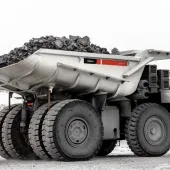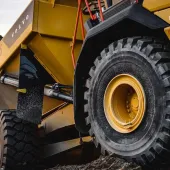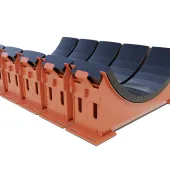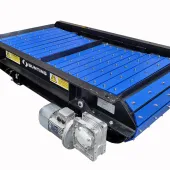New Hardox Wear Plate
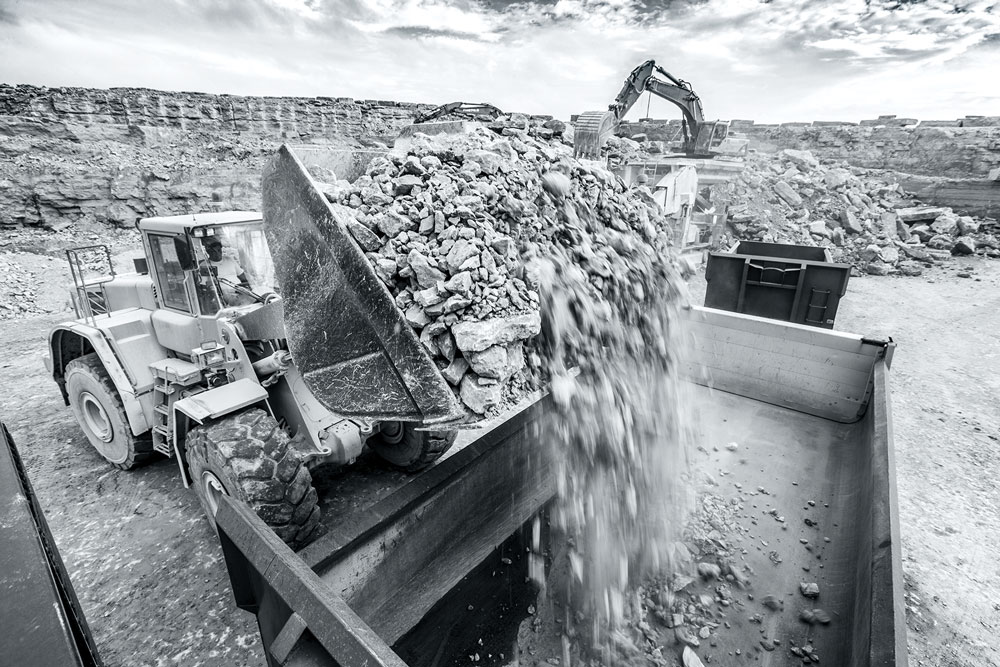
First published in the May 2017 issue of Quarry Management as Tough Stuff
Two new Hardox wear plates for the toughest applications
Over the past 20 years, the range of available products within the Hardox wear plate family has undergone several step changes. Thickness now starts at 0.7mm and is available up to 160mm, whilst hardness ranges from Hardox HiTuf to Hardox Extreme, the world’s hardest wear plate.
SSAB have now developed further grades for more specific applications, to help their customers generate more value from their operations. The company recently introduced two new wear plates designed for tough applications and hot temperatures.
Hardox 500 Tuf is said to be the ideal wear plate for heavy-duty dumptrucks transporting rocks and gravel in quarries, whilst Hardox HiTemp is said to be perfect for high-heat applications such as asphalt and road building.
For more than 40 years, Hardox wear-resistant steel has evolved to meet new levels of hardness and toughness. In tough environments such as quarries, Hardox can help improve productivity and extend the service life of applications.
Hardox 500 Tuf
Hardox 500 Tuf combines the best properties from Hardox 450 and Hardox 500. The result, according to SSAB, is a wear plate that has no real competition on the market.
‘It is tough enough to perform as a structural material in heavy-duty dump bodies, containers and buckets,’ said Jenny Brandberg Hurtig, wear plate product manager with SSAB Special Steels. ‘Hardox 500 Tuf’s superior wear and dent resistance gives increased service life and the ability to withstand heavy impact.’
According to WearCalc and TippCalc calculations, based on sliding wear with granite, Hardox 500 Tuf offers 85–100% longer service life compared with Hardox 400.
‘The exceptional strength, toughness and hardness of Hardox 500 Tuf make it ideal for the loading and unloading of heavy and sharp rocks in quarries and mines,’ said Ms Brandberg. ‘It also works in freezing conditions, as the impact energy values indicate.’
Hardox 500 Tuf has a guaranteed impact energy of 27J at –20°C (20ft-lb at –4°F) and a typical value of 45J at –40°C (33ft-lb at –40°F). It has an unusually narrow Brinell hardness window of 475–505HBW.
Hardox HiTemp
Launched in September 2016, SSAB say Hardox HiTemp is already showing excellent results with customers. This particular wear plate improves service life when used in abrasive environments with high temperatures. It is a quenched and tempered martensitic wear plate with a typical hardness of 375 Brinell.
‘Other high-temperature products have been more expensive and complicated to work with,’ said Ms Brandberg. ‘Hardox HiTemp wear plate is a better solution. Its high-temperature performance is achieved by using high-quality raw material in combination with a carefully controlled manufacturing process.’
Traditional quenched and tempered wear-resistant steels experience a loss of hardness at higher temperatures, in the 300–500°C range, depending on wear conditions. Hardox HiTemp, however, is designed for wear applications up to 500°C (932°F).
‘Hardox HiTemp retains more of its hardness at higher temperatures and also has better form stability at elevated temperatures,’ said Ms Brandberg. ‘It can be cut, welded, machined and cold formed by the same kind of workshop machinery and technology as other Hardox grades and conventional steel.’
Another benefit of Hardox HiTemp is its ability to withstand the temperature deformation that leads to buckling and cracks. SSAB say the wear plate reduces cost, improves uptime and increases safety, thanks to less frequent shutdowns for maintenance and repair.
- Subscribe to Quarry Management, the monthly journal for the mineral products industry, to read articles before they appear on Agg-Net.com


